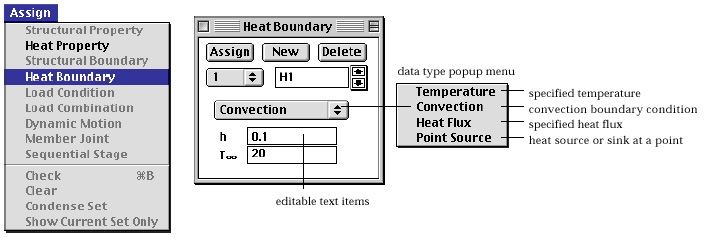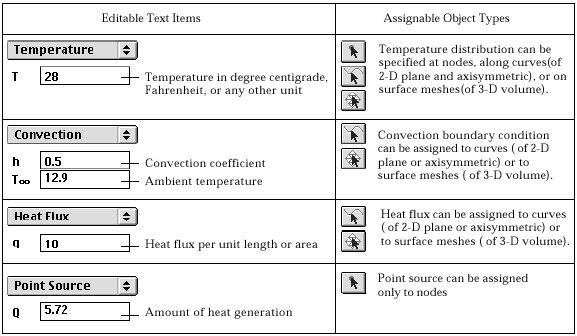![]()
| Data Assignment > Heat Conduction and Seepage Boundary conditions > Defining heat conduction boundary conditions |
|
|
|
|
||
Defining heat conduction boundary conditions
You must first create and define sets of heat conduction boundary conditions before assigning them on the heat conduction model.

> Types of heat conduction boundary condition
There are a few different types of heat conduction boundary conditions as follows:
The type of heat conduction boundary condition is chosen using the popup menu in "Heat Boundary" dialog. The editable text items are altered subsequent to selection of the popup menu.
> Editable text items
Each type of heat conduction boundary conditions has different editable text items as shown in the following table. The boundary conditions are defined by entering the numerical values into these editable text items. Centigrade, Fahrenheit, or any other unit may be employed, but should be used consistently for all items.

< Editable text items of heat boundary condition>
|
|
|
|